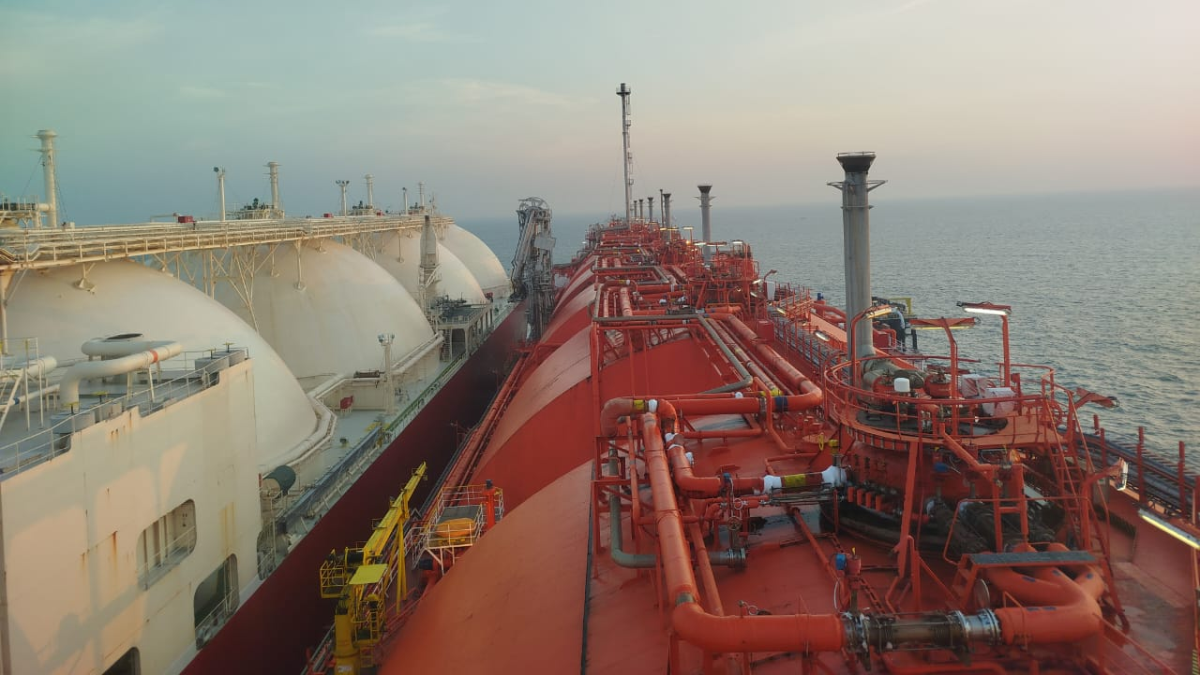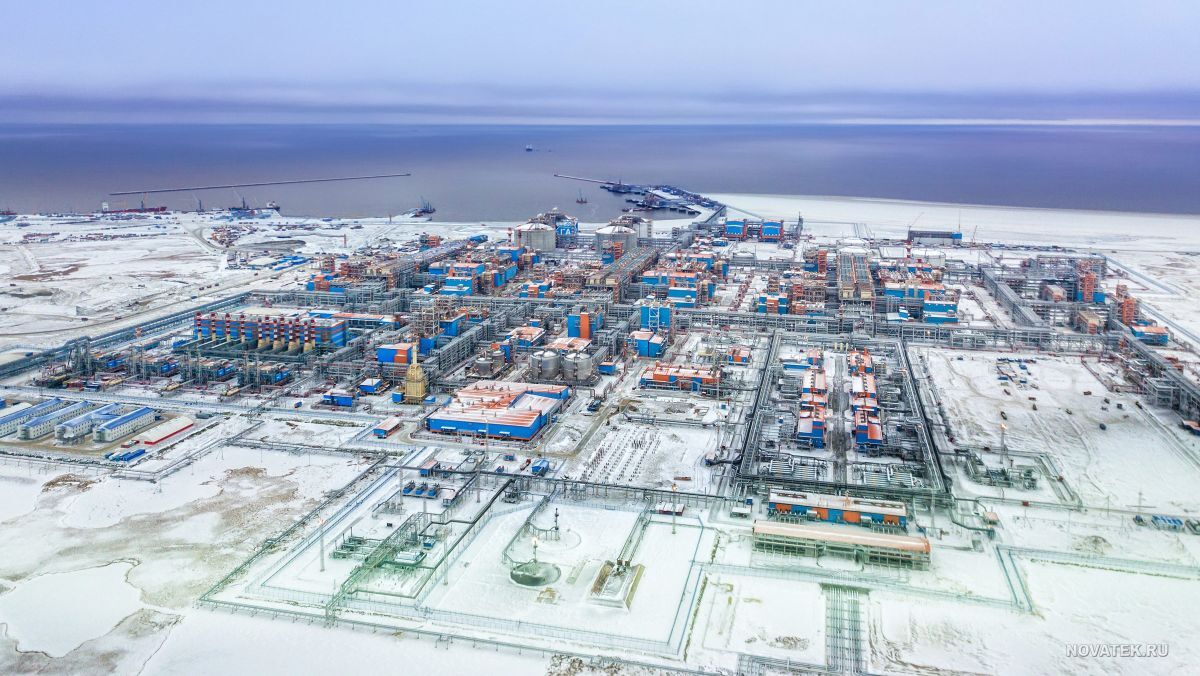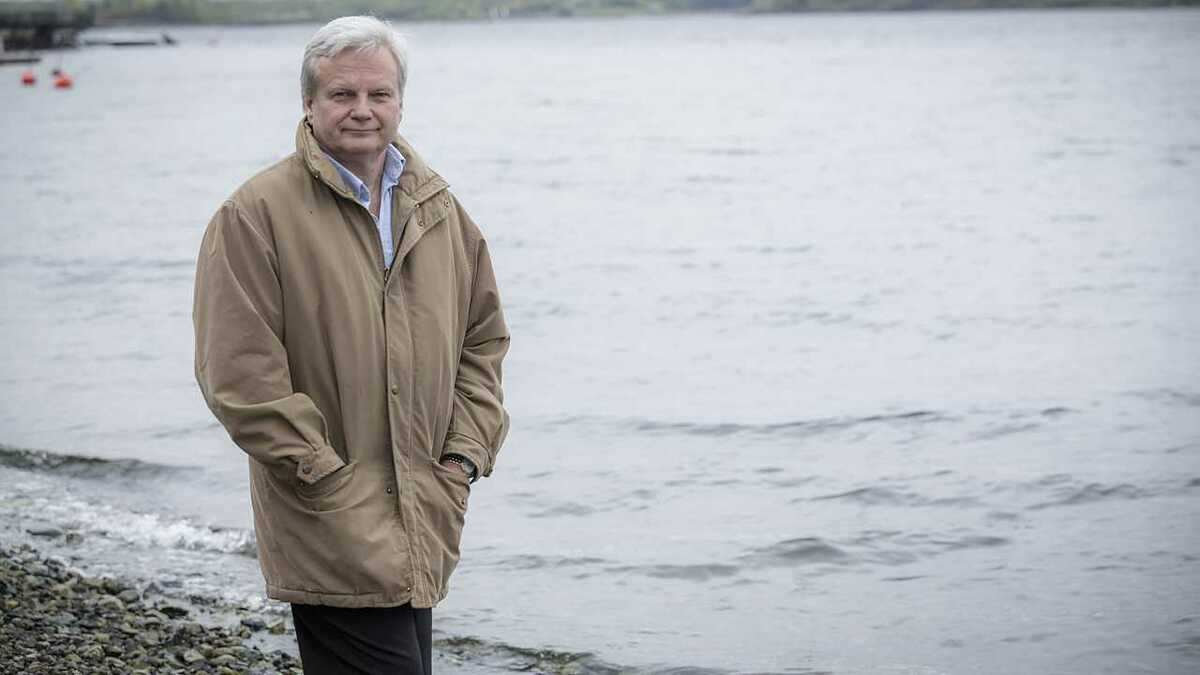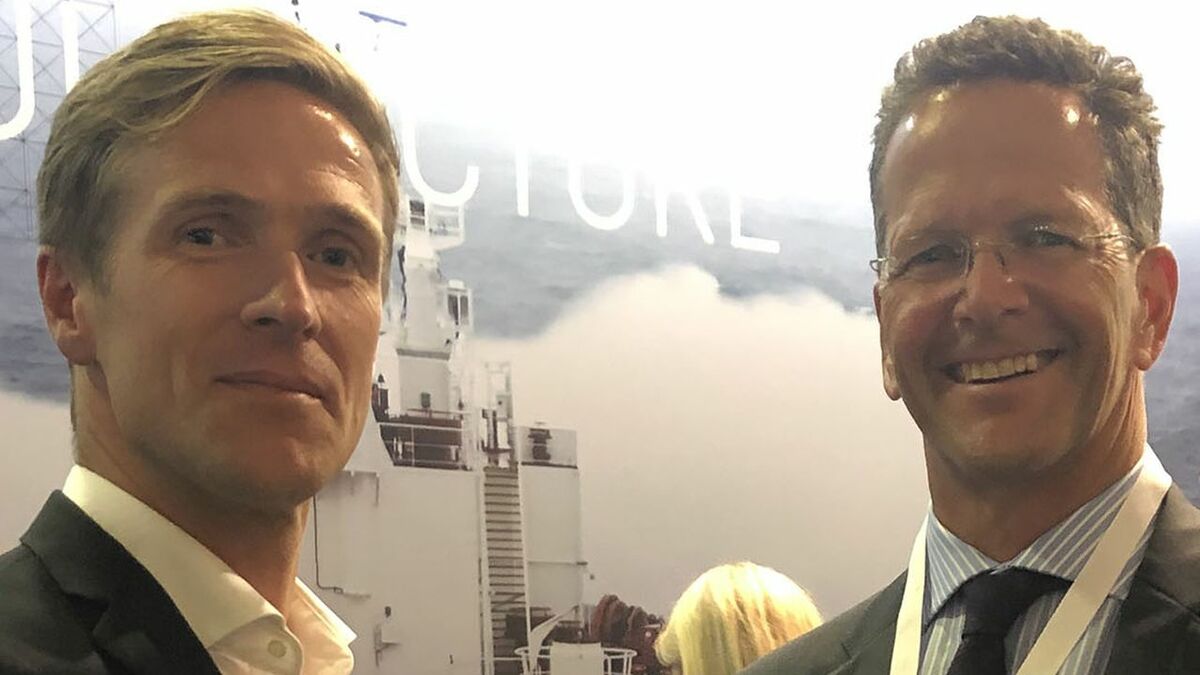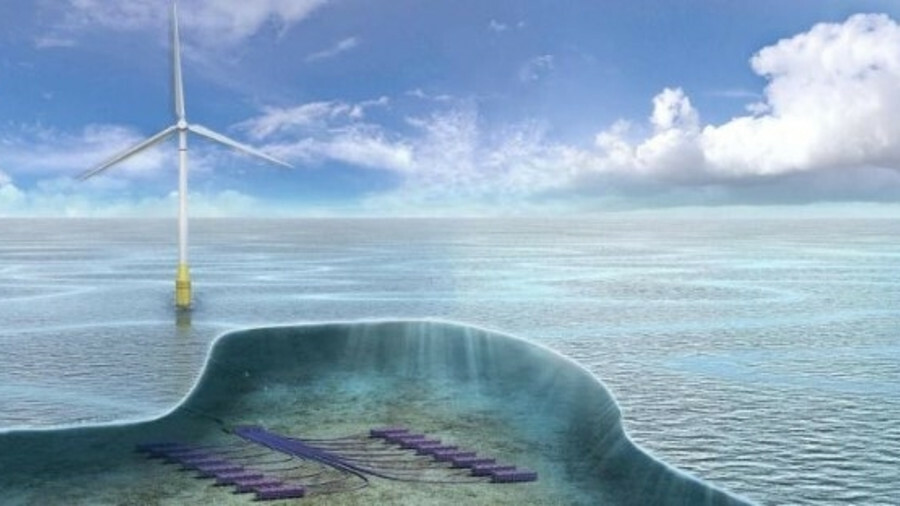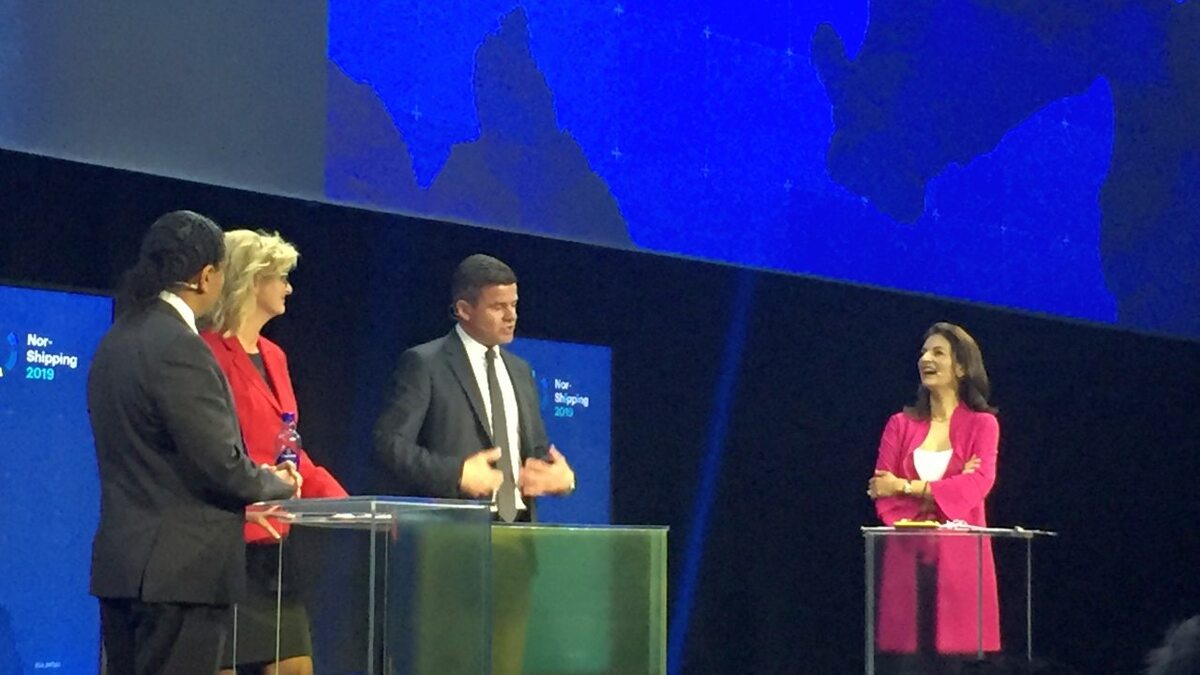Business Sectors
Events
Contents
Norway supporting equipment procurement
Norwegian companies supplying vessels and equipment to the international market are competing with a widening array of companies around the world. In particular, the trend for vessels to be constructed in Asia means that Norwegian companies must convince shipbuilders, as well as vessel owners and end users, of the benefits of their products. They must also be cost competitive with rival suppliers in what are often cheaper countries.
The continuing success of Norwegian companies in the international market is in addition to continuing product innovation and quality, in no small part due to the extensive efforts of various government agencies to assist in promoting and supporting them in a variety of ways. An event at this year’s Asia Pacific Maritime in Singapore – a Norwegian Procurement and Finance Day – brought together several of these agencies and Norwegian maritime companies that are involved in generating business in key markets around the world, as well as prospective purchasers of Norwegian services. The government agencies outlined the support that they offer for Norwegian suppliers, while the purchasers explained some of their priorities and requirements for using Norwegian products.
The event was hosted by Norwegian export organisations Innovation Norway and the Norwegian Business Association (Singapore). Innovation Norway provides support for technology innovation with a particular focus on green technology. It also assists Norwegian companies with promoting their products in international markets, through trade missions and other activities. The event focused on procurement, highlighting how Norwegian companies can position themselves to secure contracts to supply equipment for the increasing volume of orders being placed by shipping companies and yards in Asia, particularly in the offshore sector.
In his introduction, Norway’s ambassador for Singapore, Tormod Endresen, said: “South East Asia will become a hot spot for oil and gas exploration and production, with major growth prospects. Norway companies will be part of this development based on their experience in the tough environments in the Norwegian continental shelf and Barents Sea, and their extensive maritime tradition. There is a need for co-operation to find solutions for equipment procurement and for financing.”
Egil Rensvik, science and technology counsellor for Innovation Norway in Singapore, commented: “There are various research projects in Norway on ship efficiency. For example Norwegian Marine Technology Research Institute [Marintek] and Sintef are involved in model testing on optimisation of hull design, and research on LNG as fuel and small-scale LNG distribution.”
Gunn Vik, regional director for shipyards in China, Korea and Singapore at Norwegian Oil and Gas Partners (Intsok) – an organisation promoting Norwegian suppliers for global projects – outlined the key findings of a new report, Global Procurement Processes – Phase 1. This covers the scenario when Asian shipyards are awarded construction contracts for installations to be used on the Norwegian continental shelf. Intsok was created by three Norwegian government ministries and oil companies to promote Norwegian suppliers for global projects.
According to the report, the ultimate goal for Norwegian oil and gas suppliers is to win more contracts for projects at yards in Asia. To become successful bidders Norwegian companies must maintain a close dialogue with oil companies, Front End Engineering Design (Feed) contractors, engineering contractors and fabrication yards.
Oil companies operating on the Norwegian continental shelf have awarded several engineering, procurement and construction (EPC) topside projects to yards in Asia. Norwegian suppliers need to become preferred suppliers either by inclusion on the oil companies’ approved vendor lists, or on Asian yards’ lists of prequalified suppliers. The report emphasises the importance of taking legal advice when doing business in Asia, especially in Korea, as local terms and conditions differ from those used in contracts in Norway.
Ms Vik said: “More vessels are being built in Asian yards. The procurement processes are different from when most vessels were built in Europe, including Norway. Suppliers need to know how to deal with this. We are advising them how they should go about getting this business.”
She told Norwegian Solutions that some Norwegian companies do not have the processes or experience required for global procurement and need to draw upon those that do. The report focused mainly on contracting with Korean yards, but it also covers Singapore and China. “Suppliers need to engage with oil companies as well as meeting yards’ requirements. In the past Norwegian yards and suppliers were favoured. Now, however, Norwegian oil and gas companies are increasingly using Asian yards so there is a need for Norwegian suppliers to be aware of the needs of contracting and winning orders at Asian yards.”
The background to Global Procurement Processes - Phase 1 was increased global energy demand prompting oil companies to invest in new areas, while existing platforms also require modification and upgrading. The most challenging is for topside engineering components for production platforms and also for floating production storage and offloading (FPSO) units. “Suppliers need to get engaged early and come in when the concept stage is underway. Suppliers need to start marketing early to oil companies and also to shipyards for pre-qualifying, for getting contracts from Asian yards building offshore installations and support vessels,” Ms Vik said. “Oil companies and yards may have their own preference for suppliers, so early engagement is very important.” She said that suppliers should prioritise getting on these approved vendor lists because they are often a prerequisite for being considered for contracts.
“Our experience of yards in Singapore is that they are not used to the EPC role at contract level, so it is important to know the oil company rather than the yard’s commercial people. In Korea yards are more mechanised and highly efficient, while Singapore yards feature more manual work but have a positive attitude. Carrying out detailed engineering planning before the contract award leads to fewer changes. Suppliers need to be flexible and develop cultural awareness of the markets where they are seeking contracts. Chinese yards have traditionally fabricated less complex units. However, in recent years they have begun winning more challenging projects. A handful of Chinese yards are moving into more complex projects and winning market shares. New suppliers should seek advice from those companies with experience in Asia. Ms Vik said to Norwegian Solutions: “Some Norwegian companies do not have the processes or experience for global procurement and need to draw upon those that do.”
Although the report focuses on Asia, Intsok promotes Norwegian yards and suppliers worldwide. “We are focusing on 60 mega projects worldwide and send delegations and conduct roadshows, with advice also available locally. Norwegian companies tend to have higher prices but technology of a high level and quality is reliable. In the past Norwegian yards and suppliers were favoured but now Norwegian oil and gas companies are increasingly using Asian yards so there is a need for Norwegian suppliers to be aware of the requirements for contracting and winning orders at Asian yards.” Intsok can contribute to maximise the Norwegian content of an order, regardless of whether contracts are awarded to Norwegian or international yards.
Ms Vik outlined a development process which can take a considerable time. It includes preliminary business planning, pre Feed and concept studies, the Feed itself, project tendering and project execution with enough time to finish the process and system engineering design. Early engagement by suppliers is essential.
Carl Arnet, chief executive of BW Offshore Singapore, gave the viewpoint of a shipowner involved in offshore vessel construction projects and the requirements of the procurement and building processes. He said that BW Offshore prefers to work with a small number of competing key sub-contractors and vendors. “We have an approved sub-contractor list for competitive tendering. We focus on build costs but also on whole lifecycle costs. A proven track record and technology are key. BW Offshore will consider innovative approaches when designing facilities but individual elements must be proven.”
He described BW Offshore as an offshore production operator rather than a shipowner, but linked to shipping. BW Offshore operates 16 FPSOs and one floating storage and offloading (FSO) unit. Of the FPSOs, 14 are owned and two are operated for clients. At the end of 2013 the company’s orderbook was worth US$7 billion. Mr Arnet made the point that BW Offshore is not involved in oil and gas exploration, but only the production phase.
He described the project cycle for FPSOs as tendering, including front-end engineering and design, execution, detailed engineering, procurement and operation. “There is a trend towards applications in harsher environments and greater complexity which points towards more newbuilds rather than conversions. Topside installation and equipment is particularly significant in these projects. As an owner, we specify most of the equipment. A core aspect is the integration of the FPSO unit and the topside.”
Mr Arnet commented that Singapore is currently the best place for FPSO contracts, having three competent and competing yards with capacity and experience. “Delays are not acceptable as our component is only one part of a much bigger overall project. FPSO projects are risky as we agree a fixed price with clients before cost elements are contracted.” BW Offshore has about 320 approved suppliers and sub-contractors that have contracts valued at over US$1 million. Its standard approach is to have a competitive bid process. The approved sub-contractor list is maintained by means of input from the operational fleet with lifecycle feedback to assess the performance. Proven technology and track record are key aspects for the selection of suppliers and subcontractors. But he stressed that BW Offshore promotes innovative approaches when designing production units but individual components within that need to be proven. A typical modern FPSO will have more than US$500 million in procurement and sub-contracting. Because the FPSO business is risky it requires substantial competence. Selection of the right subcontractors is one of the essential elements in a successful FPSO investment.
Ronny Kvalsvik, vice president for offshore sales and contracts at Rolls-Royce, pointed out the similarities between Norway and Singapore regarding their respective maritime clusters. He said this was one reason why many Norwegian companies choose to use Singapore as their main base in Asia and why they are so successful there.
According to Export Credit Norway, the competitiveness of Norwegian suppliers was tested in 2013, when several larger projects went to foreign companies. However, even in such situations, the agency found that Norwegian exporters are securing major sub-contracts.
Most demand for its loans is being driven by the oil and gas sector. “In the next two to three years, more than 90 per cent of lending volume is expected to be linked to the financing of ships and equipment for offshore oil and gas projects. Export Credit Norway has financed almost all offshore-related vessels constructed at Norwegian yards in the past two years. Exports of ship equipment are also showing a strong and increasing growth,” the organisation’s recently published annual report said. “In the past 10 years, the Norwegian supplier industry has more than trebled its sales in markets outside Norway, and this internationalisation trend is expected to continue.”
Export Credit Norway key to
marine exports
Lars Hasle, senior vice president specialising in renewable energy at Export Credit Norway, outlined the role of his organisation in assisting Norwegian companies export marine and other products to global markets. Export Credit Norway is a limited liability company wholly owned by the Norwegian Government. “We provide loans for the purchase of Norwegian capital goods,” he said. Its total portfolio at the end of 2013 was NKr 45 billion (US$7.5 billion). Mr Hasle said that Export Credit Norway works in co-operation with the export credit guarantee agency The Garanti Instituttet for Eksportkreditt (GIEK) and with a wide range of both Norwegian and international commercial banks. It provides loans based on commercial interest reference rates for periods up to 12 years. Mr Hasle said that GIEK is a vital partner and covers political and commercial risks.
Export Credit Norway’s role is defined as providing competitive financial solutions to buyers of Norwegian capital goods and services, thus helping Norwegian exporters to win contracts. The company’s primary objective is to promote Norwegian exports by providing competitive, accessible and effective financing.”
Export Credit Norway is funded by the Norwegian Government and structured as a limited liability company under Norwegian law. All its loan products are in the form of export credits. Mr Hasle said that loans are normally granted for ships for periods of two to 12 years, with repayment periods generally up to 8.5 years. “We offer a stable long-term source of financing at competitive interest rates.” Its lending policy is in compliance with international rules on government-backed loans.
Olav Breilid, Export Credit Norway’s senior vice president for the maritime industry, went into more detail on shipping-related loans. He said: “There are three types of financing we provide: for ships built in Norway for Norwegian owners in the offshore sector, parts of ships built outside Norway by Norwegian-owned yards, and ships built outside Norway where we can finance the Norwegian package of equipment and services. Norwegian content must represent at least 30 per cent of the contract amount for deliveries from companies in Norway or Norwegian-owned companies abroad.”
Export Credit Norway can offer financing of a package of Norwegian equipment and services for vessels. “We offer financing for up to 80 per cent of the total package of Norwegian equipment and services. If there is a series of vessels, Export Credit Norway can provide financing for the applicable amount on each vessel, or aggregate all Norwegian content to finance up to 80 per cent of the last vessel, or a combination. Loans are for a maximum of 12 years from disbursement based on a case-by-case evaluation.”
Mr Breilid summarised the advantages of using Export Credit Norway as attractive pricing, access to long-term financing in all market conditions, flexibility within the overall framework, a highly specialised and competent organisation, and with capacity for more projects in the future.
During 2013 – the organisation’s first full year of operation following its restructuring – the company agreed loans worth about US$3.8 billion and received applications for more than 400 loans. At the end of 2013 about 68 per cent of its loan balance of more than US$7.5 billion was from maritime industries, illustrating the importance of the maritime sector to Norwegian exports and the key role of Export Credit Norway in supporting those exports.
There was an increase in the number of loan applications for ships and related equipment of more than 20 per cent compared with 2012, and the lending balance on ships alone increased by more than US$2.6 billion from the end of 2012 to the end of 2013. In terms of lending volume, Export Credit Norway’s two largest segments are ships delivered by Norwegian yards and equipment for the offshore oil and gas sector.
The chief executive of Export Credit Norway, Jarle Roth, said: “In the maritime sector, there is an increasing trend towards constructing simpler vessels abroad, while Norwegian yards are focusing on advanced vessels such as anchor-handling vessels and construction ships. This is one of the contributing factors to an increased need of export financing.” NS
Related to this Story
Events
Offshore Support Journal Conference, Americas 2025
LNG Shipping & Terminals Conference 2025
Vessel Optimisation Webinar Week
© 2024 Riviera Maritime Media Ltd.




